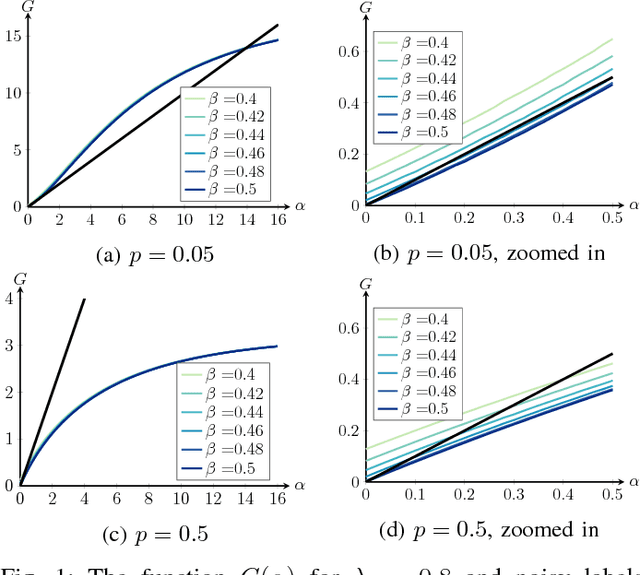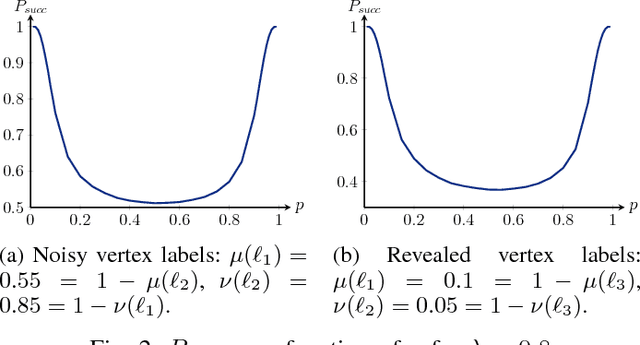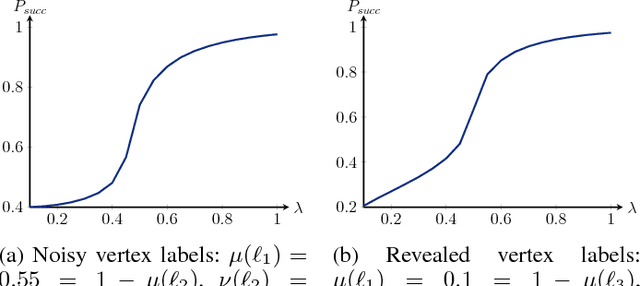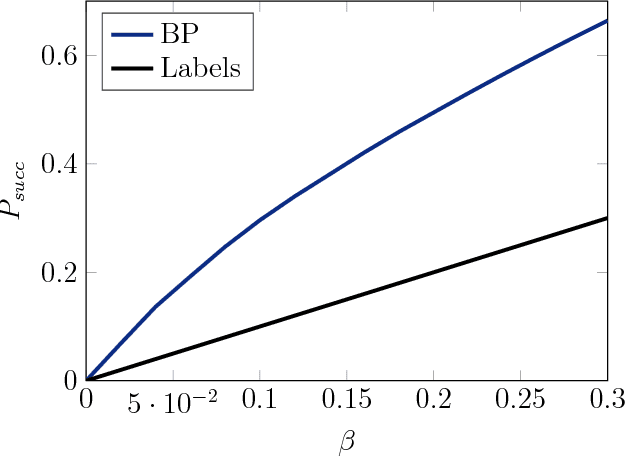Clara Stegehuis
Stationary distribution of node2vec random walks on household models
Feb 26, 2025Abstract:The node2vec random walk has proven to be a key tool in network embedding algorithms. These random walks are tuneable, and their transition probabilities depend on the previous visited node and on the triangles containing the current and the previously visited node. Even though these walks are widely used in practice, most mathematical properties of node2vec walks are largely unexplored, including their stationary distribution. We study the node2vec random walk on community-structured household model graphs. We prove an explicit description of the stationary distribution of node2vec walks in terms of the walk parameters. We then show that by tuning the walk parameters, the stationary distribution can interpolate between uniform, size-biased, or the simple random walk stationary distributions, demonstrating the wide range of possible walks. We further explore these effects on some specific graph settings.
Efficient inference in stochastic block models with vertex labels
Aug 17, 2018



Abstract:We study the stochastic block model with two communities where vertices contain side information in the form of a vertex label. These vertex labels may have arbitrary label distributions, depending on the community memberships. We analyze a linearized version of the popular belief propagation algorithm. We show that this algorithm achieves the highest accuracy possible whenever a certain function of the network parameters has a unique fixed point. Whenever this function has multiple fixed points, the belief propagation algorithm may not perform optimally. We show that increasing the information in the vertex labels may reduce the number of fixed points and hence lead to optimality of belief propagation.
SciSports: Learning football kinematics through two-dimensional tracking data
Aug 14, 2018



Abstract:SciSports is a Dutch startup company specializing in football analytics. This paper describes a joint research effort with SciSports, during the Study Group Mathematics with Industry 2018 at Eindhoven, the Netherlands. The main challenge that we addressed was to automatically process empirical football players' trajectories, in order to extract useful information from them. The data provided to us was two-dimensional positional data during entire matches. We developed methods based on Newtonian mechanics and the Kalman filter, Generative Adversarial Nets and Variational Autoencoders. In addition, we trained a discriminator network to recognize and discern different movement patterns of players. The Kalman-filter approach yields an interpretable model, in which a small number of player-dependent parameters can be fit; in theory this could be used to distinguish among players. The Generative-Adversarial-Nets approach appears promising in theory, and some initial tests showed an improvement with respect to the baseline, but the limits in time and computational power meant that we could not fully explore it. We also trained a Discriminator network to distinguish between two players based on their trajectories; after training, the network managed to distinguish between some pairs of players, but not between others. After training, the Variational Autoencoders generated trajectories that are difficult to distinguish, visually, from the data. These experiments provide an indication that deep generative models can learn the underlying structure and statistics of football players' trajectories. This can serve as a starting point for determining player qualities based on such trajectory data.
 Add to Chrome
Add to Chrome Add to Firefox
Add to Firefox Add to Edge
Add to Edge